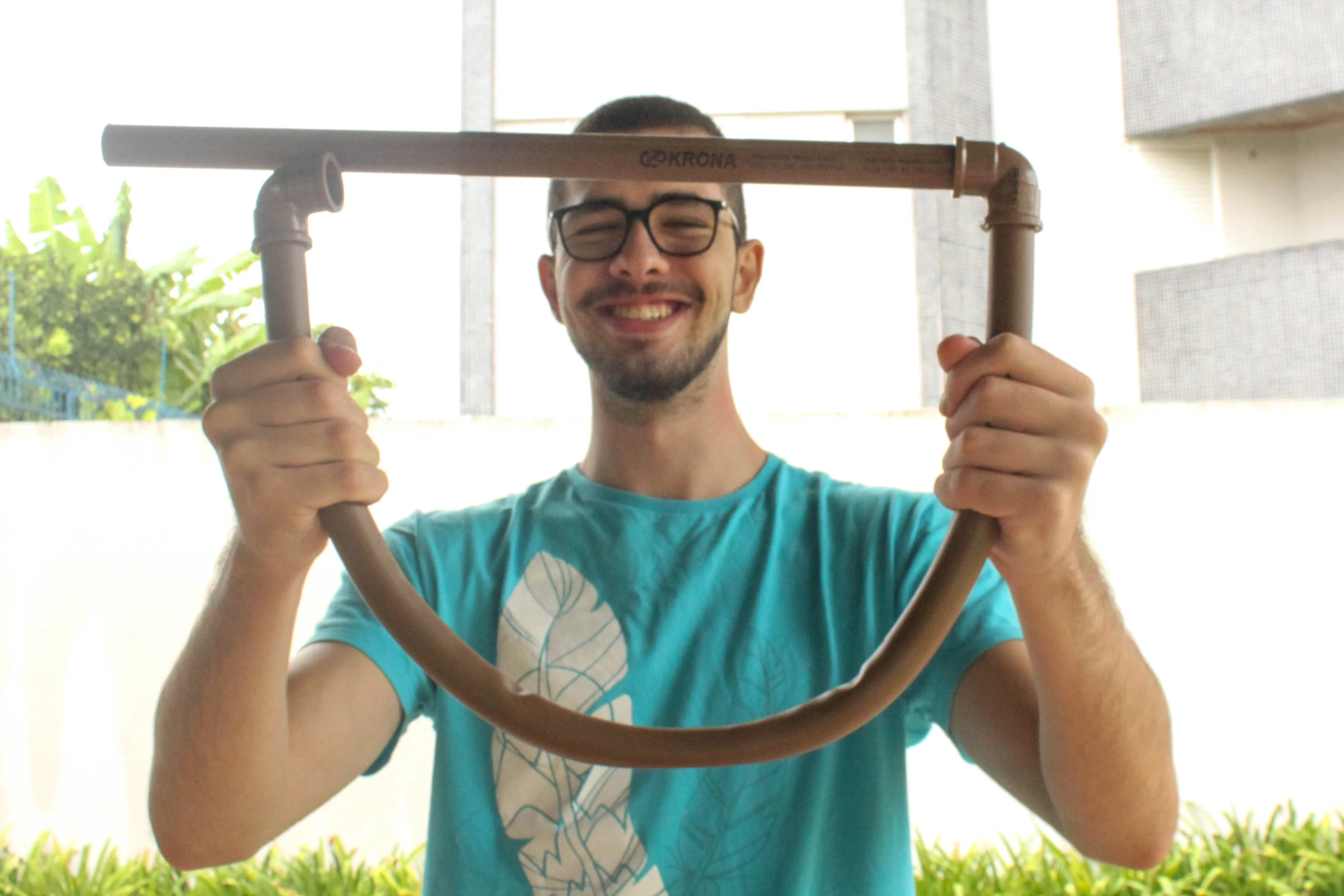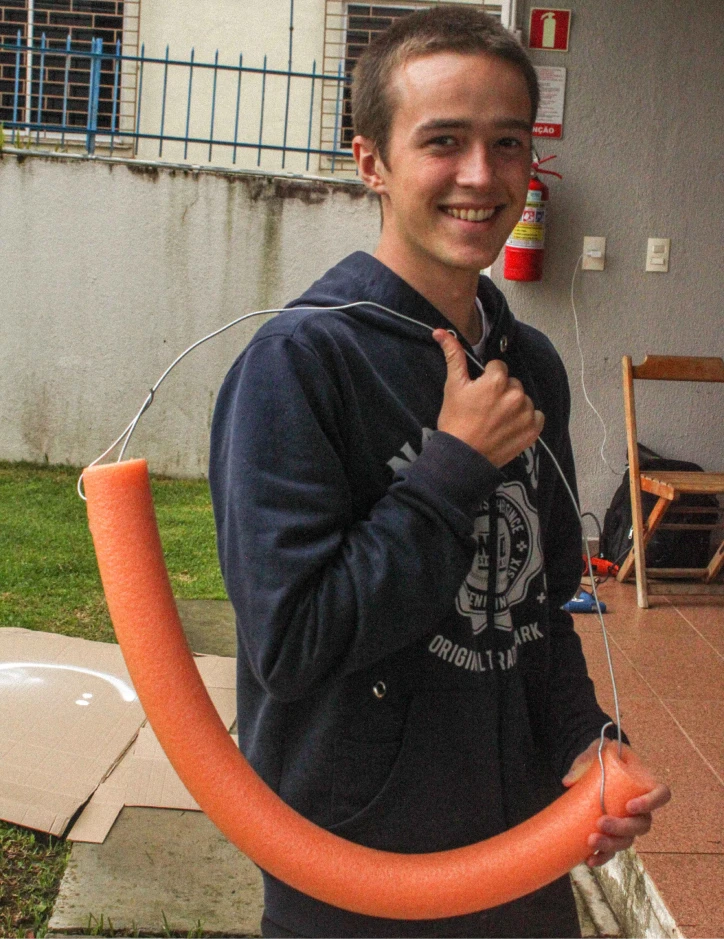Trapezi
The Trapezi rocking stool brings minimalism through few elements and the harmony between luxury and technology generated by the composition between metal and other materials. Its right angles highlight and translate the project's balance through the representative format of the concept that the name carries. The balance takes place through rods made of brass in the shape of an arc that allows the balance accompanied by small protective rubbers on the tips.
Translated from Portuguese “Sintonia Fina”, means something like “Fine Tuning”. The product series make references to the radio waves, so does the balance reproduced in the rocking stool design.
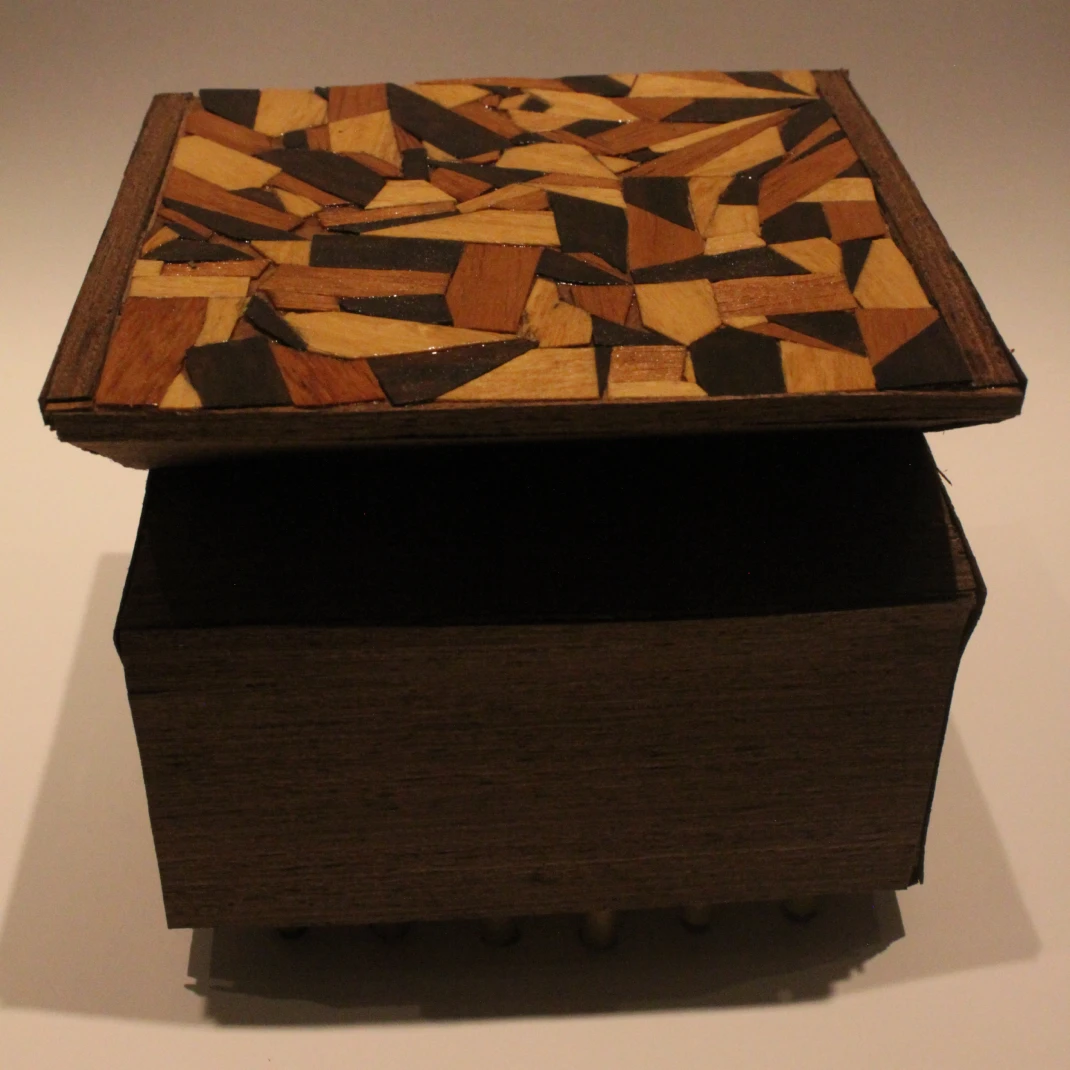

Shape of the project
Project made for the lecture of "Product Project I" in 8 weeks with Beatriz Dea, Felipe Pick, Isabela Sati, Pedro Morais to pursue Bacharelor Degree in Product Design at Universidade Federal do Paraná
The brefing was to design a conceptual miniature appearance model of a rocking stool for residential individual use, made of laminated wood with marquetry techiniques applied, and inspired by a series of products by a modern Brazilian designer.
Claudia Moreira Salles and her series "Sintonia Fina" was our refference of choice.
With that decided we could run a formal analysis, considering a dozen of visual concepts we found interesting insights around form and arrangement.
Repetition; Continuitity and Breakage; Assimetry and Contrast of Textures were the main points.
Technical understanding around ergonomics, wood selection and process was also tackled in this step of the project. Having a portfolio of options to decide later really helped to chose which way to go when doing an similarity research. Surveying used techniques on the market, organizing and comparing them searching for unique of wooden insert and swing mechanics.
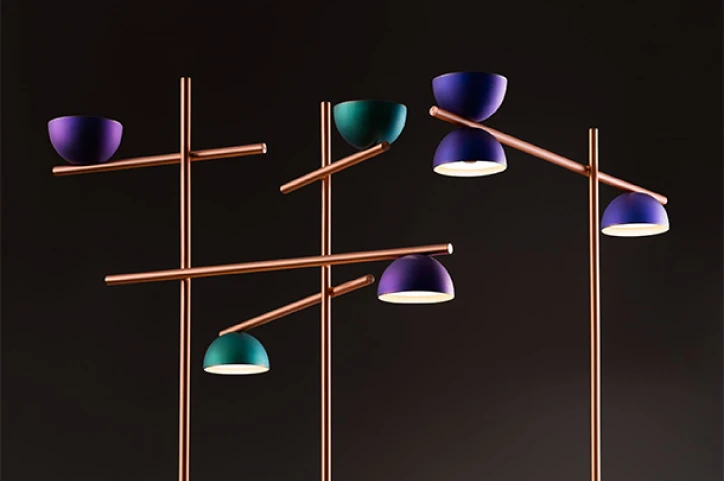 One of the products from Claudia Moreira Salles “Sintonia Fina”
series
One of the products from Claudia Moreira Salles “Sintonia Fina”
series

From idea to form
This stage was dedicated to create alternatives considering all the conceptual studies and then settle in one considering experiments around the technical studies we did, having a few and fresh insights.
Using an alternative selection matrix, we selected 8 sketches to build evolve them to paper and cardboard miniatures.
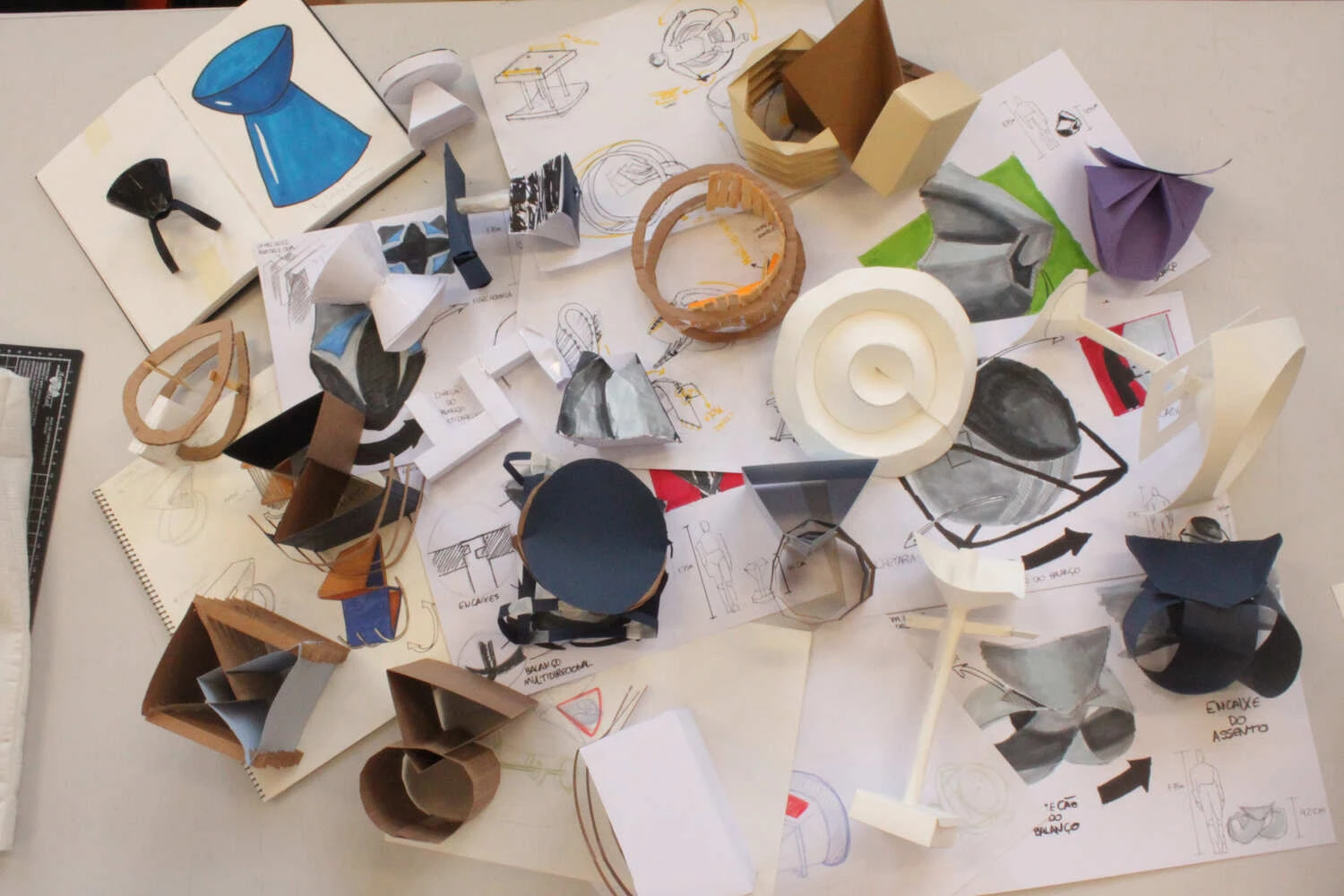
From the paper and cardboard miniatures we could develop mockups that had the size we needed, considering the following ergonomic metrics studies
The materials from small pieces of paper or cardboards, straws became carboard boxes, PVC pipes, foam, wires...
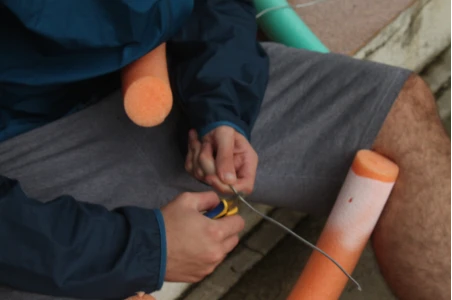
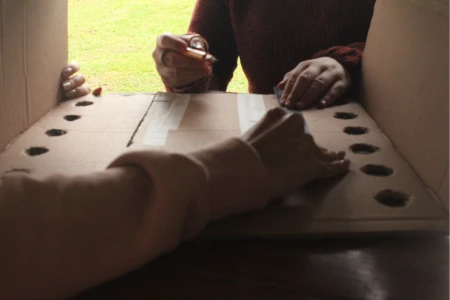
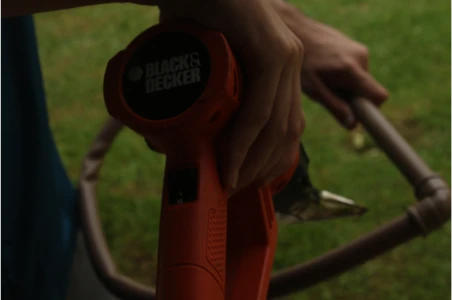
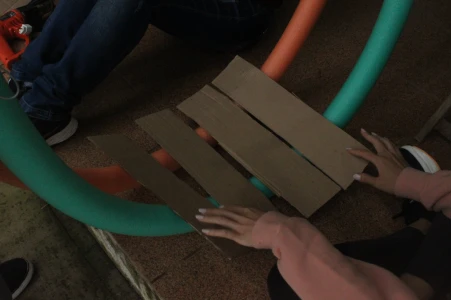
Tools also got bigger from scissors, small cutters to band saws and hot air blowers
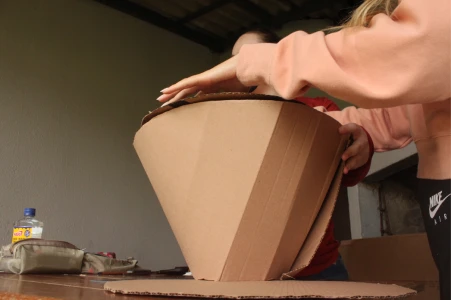
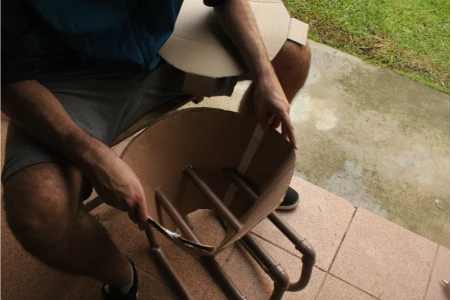
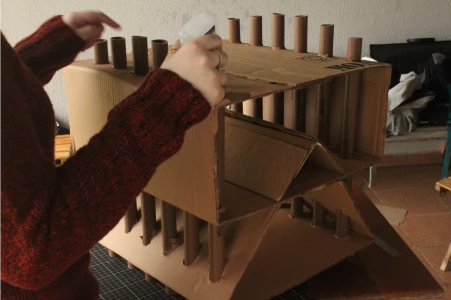
Experimenting shapes and compositions; Adapting calculations and sketches; Having insights and discovering another paths; The most suitable alternative became clear to the group.
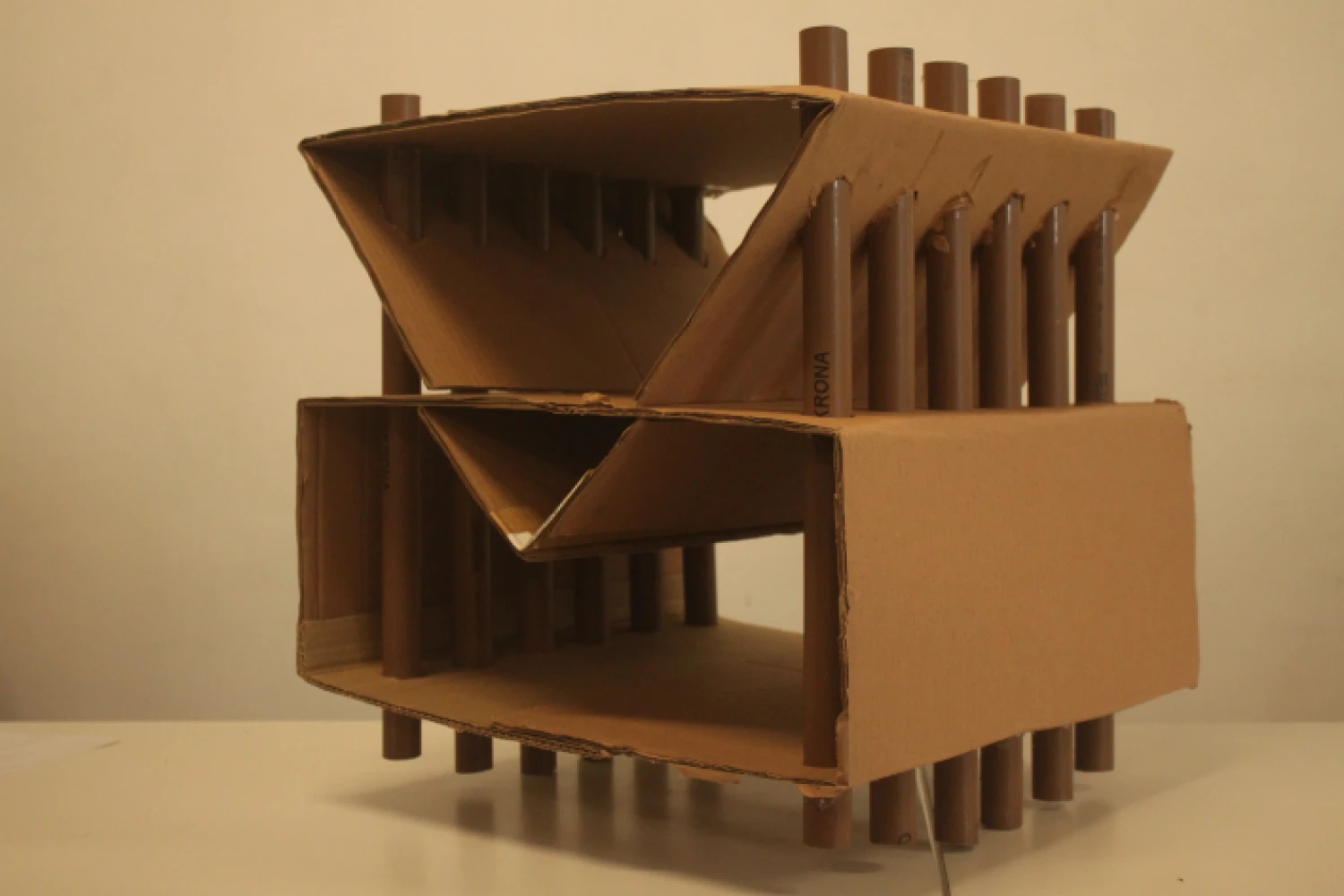
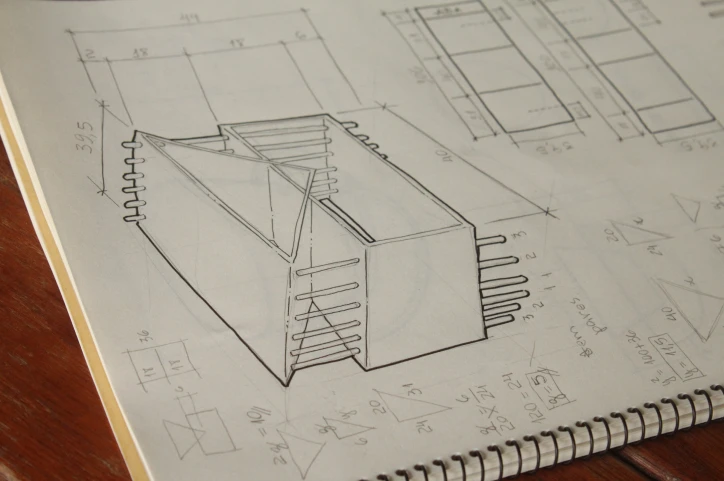 A detailed sketch with some triangles math involved.
A detailed sketch with some triangles math involved.
Iterating
Mockups serve a pourpouse, I view them as a way more as a research practice then a building process.
As any good research we already knew our doubts and goals.
Is this thing going to swing? Is affordance being applied here? Would and how people sit on this? Does it support the person sitted?
The answers to almost to all of this questions - except the 1st one - is no. The rocking stool was missing a stable shape that could support the person and communicate that it was safe to sit.
With the bottom part filled we brought more stability to the system.
We also discovered that the rods on top of the seat was also something that was affecting the ergonomy of the product.
Hiding part of the rods translated more simplicity to the shpae.
Detailing
With a more mature understanding of the rocking stool concepts and ergonomics, and preparing to build the miniature appearance model, we drawed a technical map with all dimensions and fittings.
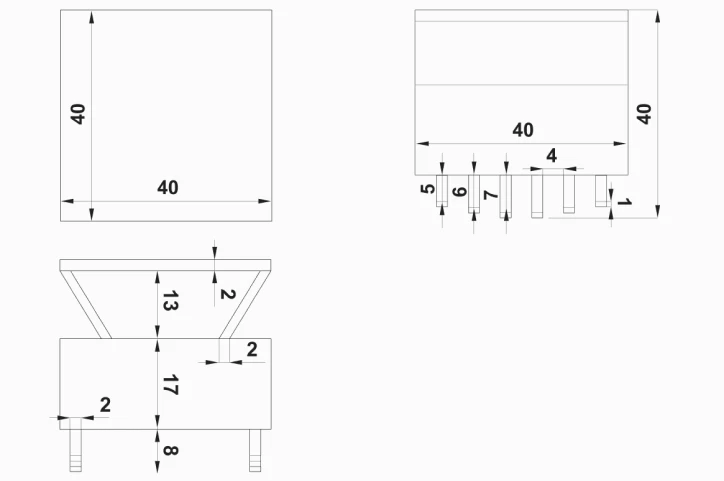
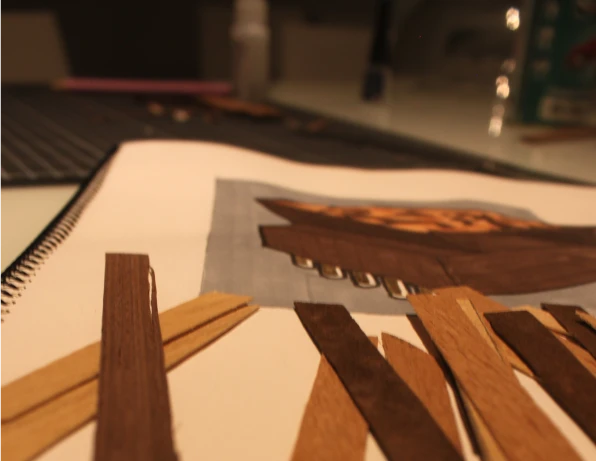
So, using the material research we choose to replace the PVC pipers with ones made with brass- simulating copper.The structure was made with Imbuia wood and the marquetry mosaic build with Imbuia, Marfim, and Tauari wood and polished with sets of sandpaper from the range 240 to 360 and Carnauba Oil.
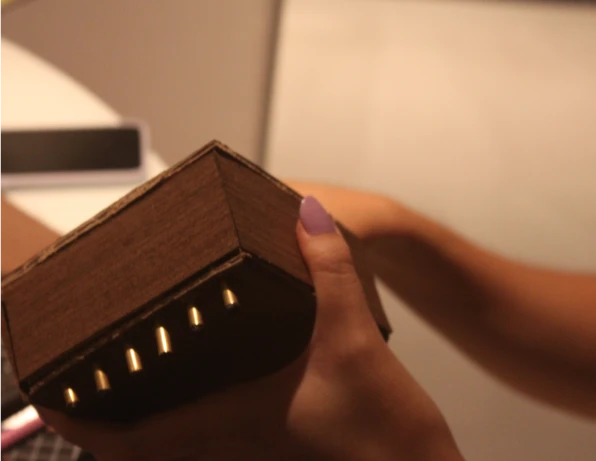

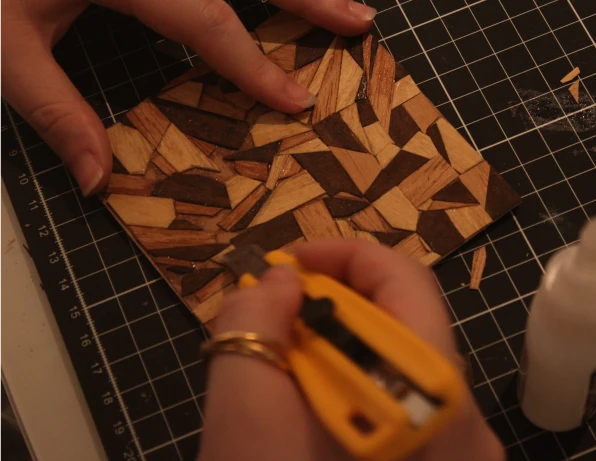

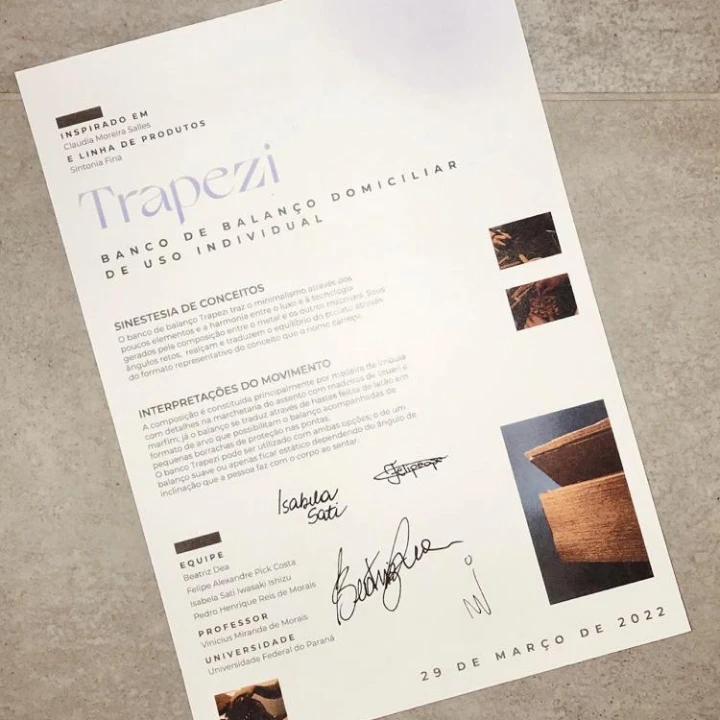
Other deliverables
The project was also followed and promoted through a flyer made with all the conceptual and technical characteristics summarized in it and a project diary with more information about the project.
03 release KPIs
As mentioned, this is an university project that my never see the light of the market, however as a way to practice these are the most important KPIs that I would keep the eye on after realeasing to the market:
CPA
As a premium product-meaning, it wouldn't be sold by millions-the Cost per Acquisition would be most important metric to understand the cost-effectiveness of bulding this rare product.
Inventory Turnover
Using materials that are not that acessible can have a big backlash. The Inventory Turnover would help understand how hard is not only sold, but built and replenished.
COGS
Similar to the Inventory Turnover, the Cost of Goods Sold keeps track of the cost of the production and distribution. Analyzing this metric will help the team understand how effective is the design on getting the raw material into a more valuable asset.
I wish I knew
We all were super satisfied with the results of the projects, but we all know that we made some mistakes - besides wrong estimations over the sizes of the firsts mockups.
Bring a better sense of modernity
Claudia Moreira Salles is a super renowned designer, that, sometimes tends to a more traditional work. However in Sintonia Fina, she expanded to new horizons. That's something that I would also like to follow, if I were to redo this project
Exploring more the photography
Having a few more time, I would like to explore more scenarios and backgrounds for the photography, maybe building a 1:4 scaled living room.
